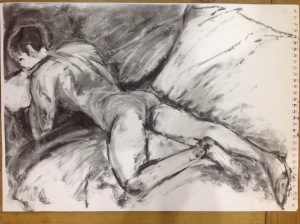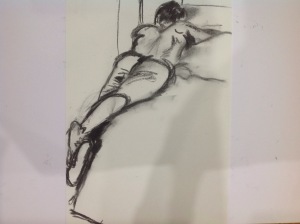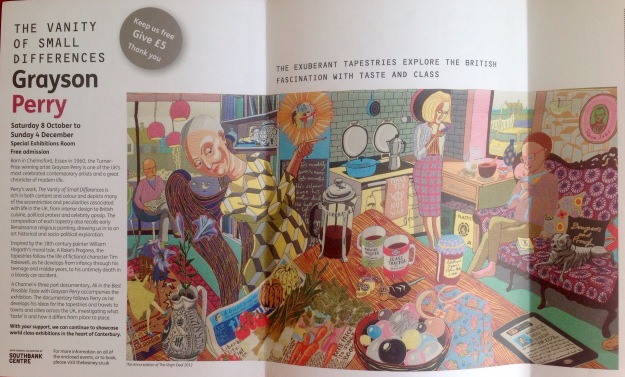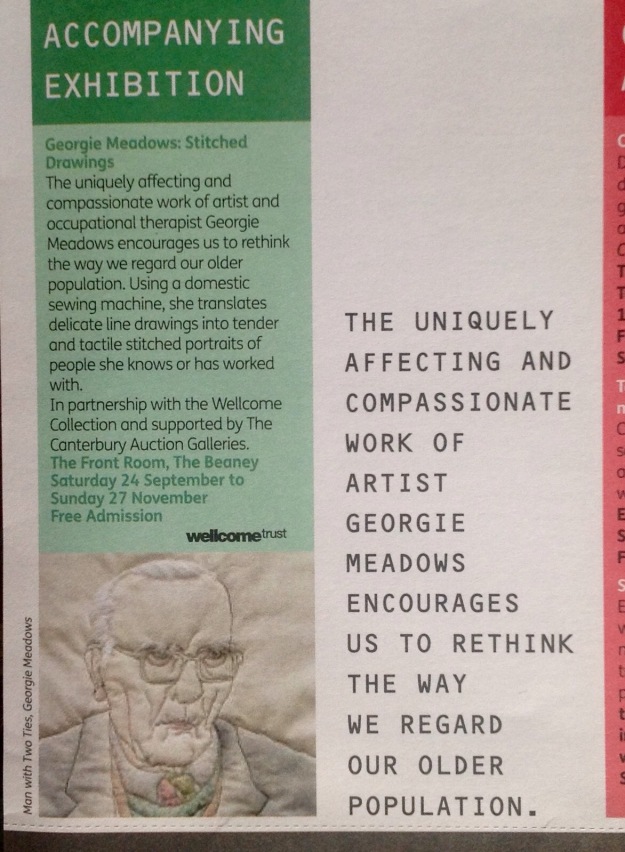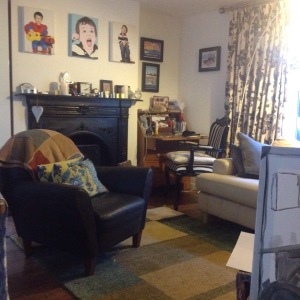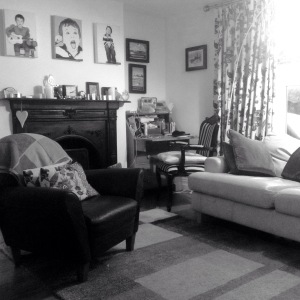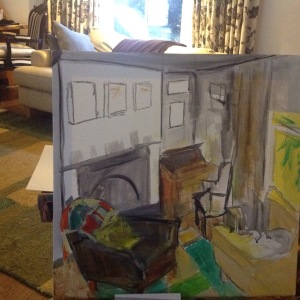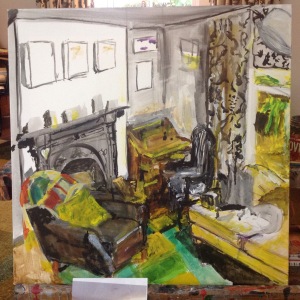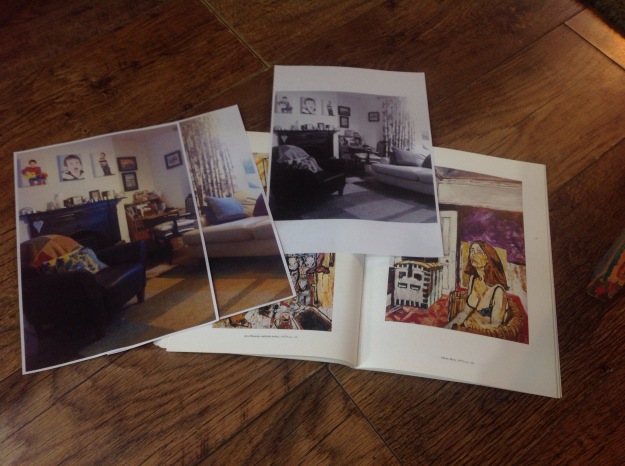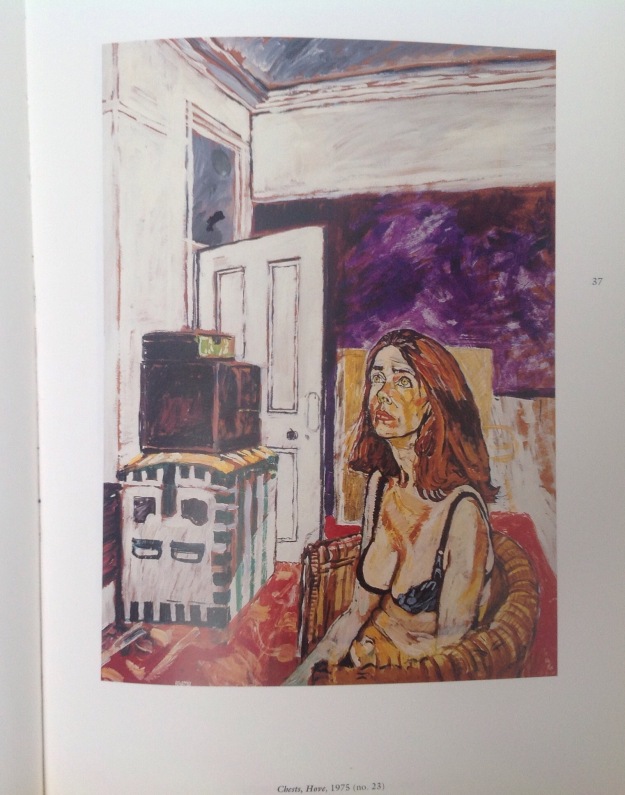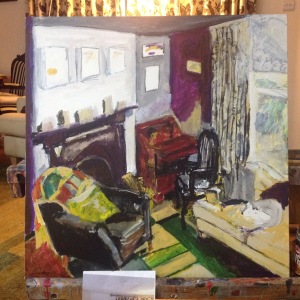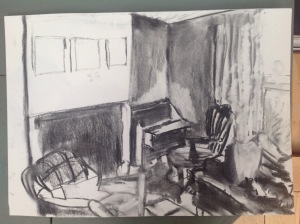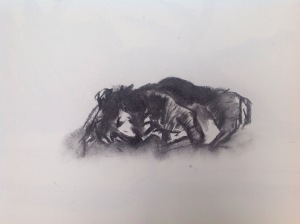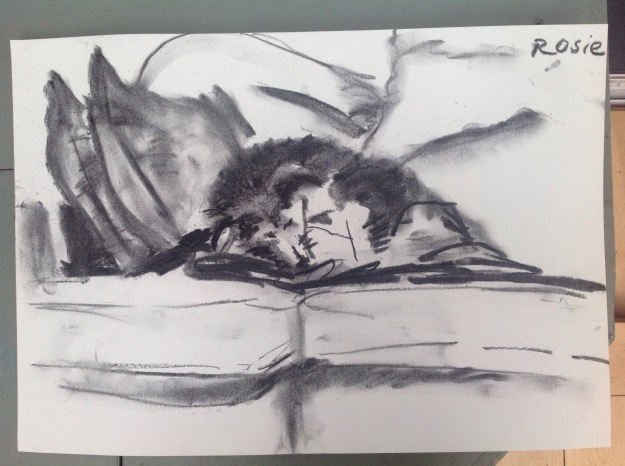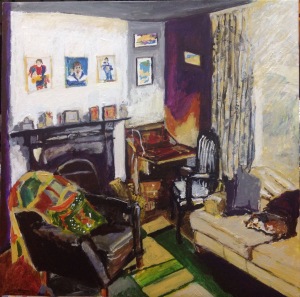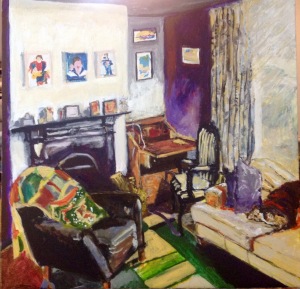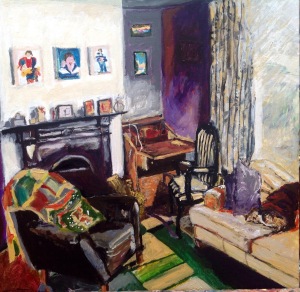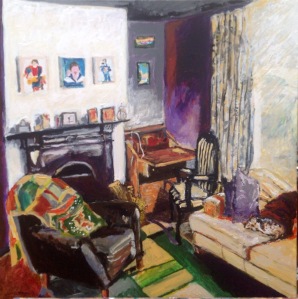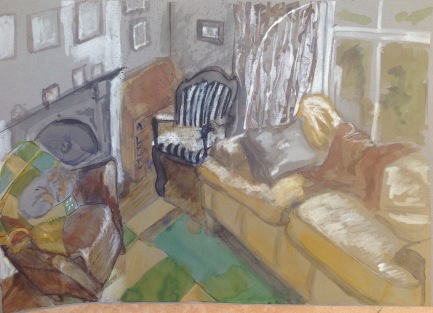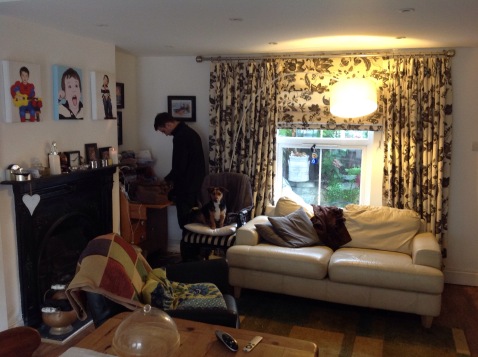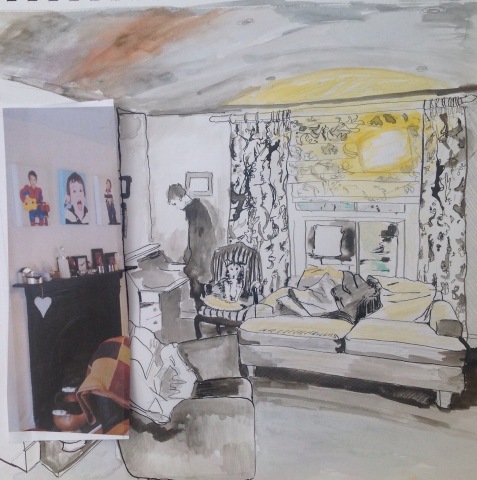Exercise -Drawing the human figure, Linear and tonal study.
• Set model up in comfortable and relaxed pose with light.
• For line drawings the light is fine being natural but for tonal; use directional light.
• Look to the shapes surrounding the figure that will help to ground the figure- the Gestalt principal of ground and figure is good to remember.
• Make several sketches , working quickly and making sure your measurements are good.
• Allow your model to rest.

charcoal drawings A2 size on paper
First of all I wanted to paint from my drawings as the model was not able to stay for to long. When I attend Life drawing classes, they range from 2 hours to 6 with many tea breaks. This pose I was able to get my husband to do and was able to spend longer drawing him until he got cold. The room where I pay for a model ;unfortunately they won’t let you paint as past students have not cleaned up and none of us are trusted any more. For this reason I decided to paint my husband.

Indian ink and Pastel on card
The linear drawing was an Indian ink with a calligraphy pen and brush and masking fluid. I wanted to keep some definite tones white. The drawing at first became dark in tone and need to lighten the tonal variation so added the pastel and then decided I would blend in some colour, basically the drawing evolved after the model had finished.
Look at this link from Tate–Henry Moore- Shelters in the tube. This was a style that influence me with the linear study and the doomsday colour combination.. Under the pastel is lots of pen details which have been clouded over.
I will try to complete some more painting/ drawings in 30 minute sessions and not focus on the background as much. I feel the ink lines still dominates even though I have added to it with PASTEL, it is still noticeable and adds depth to the medium. The scratching of the calligraphy pen nib and the flicking of ink is a technique of not getting to caught up with detail as with one flick of the pen and a big blob of ink can dispense anywhere. I enjoy this spontaneous fluid and pen but find I can over do the detail and overall the image becomes to dark as not enough variation of tone.
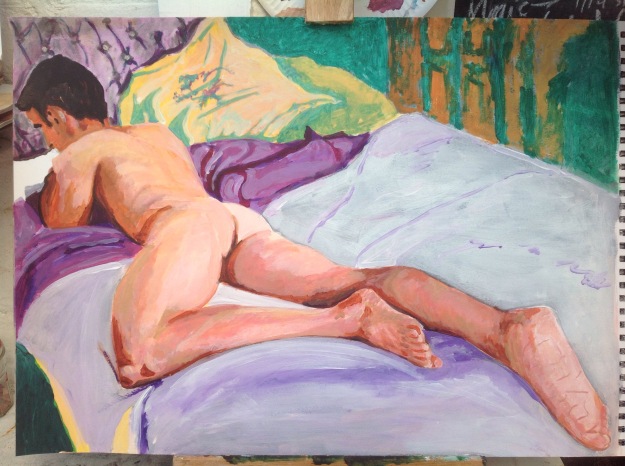
Acrylic on card
The tonal figure study, mirrors the first pose and this helps with my confidence if I repeat the images just in different mediums, it allows me to think about what the medium is doing and the colour relationships and less of the figure. I worked with natural light and feel the darkness of the head and the lightness of the foot are good variations of tone. Some shadows from using directional light, could have added drama, but I wanted an essence of; privately viewed and natural setting with the nude. The life drawing classes that I attend are so staged and tutorial based therefore look unnatural.
The foreshortening was something I wanted to capture as I find these poses intriguing as the mind works to decipher if the limbs are correctly measured. The tension between what is seen and what is imagined are ways of vibrating the image and then to use colour contrasting as a complementary colours scheme to depict tonal variation allows more vibrations. I feel the painting looks contemporary mashed with the style of modernity .
Alex Katz is branded as a pop artist but he started before and kept going long after the movement. His work has strong definition of tone variation and hardly any mid tone, very flat with many layers of paint to archive that blend of colour. His work is more stylised than branded like pop and I perceive his work as intimate figure painting .
Henri Matisse https://g.co/kgs/t6eyyQ colour construction as seen in -Portrait of Madame Matisse (Green Stripe) is an eclectic system and style. His development of the shapes with the medium of collage suggest his intent relationship with the exploration of the figure. The green and orange background I painted is used to show the colour system of contemporary colours that I choose as my colour pallet and I painted the layers so the complement colour could be seen in areas.
The mix of styles; old and not so old (1869-1954; Matisse and 1927- 89 years old; Katz) complement each other and I feel they vibrate together well. I don’t like the use of acrylic but this medium did help to blend the flesh tones without getting to thick with paint as I used card to paint on.
Have I created a solid form existing in space?
The pose of laying on the bed adds weight to the figure. The Gestalt principal of perception of ground and figure relate in this composition as the figures weight , especially around the left knee and left elbow indicate a sinking into the covers of the bed. The folds of the sheets indicate that the figure is laying on-top of the sheets. The lines of the bed are foreshortened and the angle exaggerated so delivered a view of perspective. I feel this painting shows solid form in an existing space as the figure is engulfed in the surrounding sheets which show pressure of weight from the figure and the use of foreshortening gives a dimensional illusion.
References-
